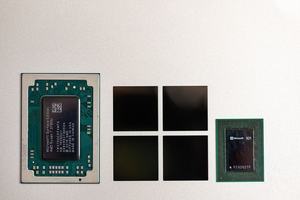Microsoft wants to develop server and client processors based on ARM
Source: Hardware Luxx added 23rd Dec 2020Apple, Amazon and Google have already done it (at least in part) or have taken the first steps and apparently Microsoft is also planning something similar: The development of its own processor design. Microsoft currently mainly uses processors from Intel for its Surface products and in the Azure cloud.
An exception is the SQ1, which Microsoft developed in cooperation with Qualcomm for the Surface Pro X. . AMD has released a Ryzen Microsoft Surface Edition for the Surface Laptop 3. These two examples are at least valid for the Surface hardware.
But now Microsoft is apparently planning to go a step further and is developing its own processors – according to Bloomberg. Like almost all x 86 – alternatives, Microsoft apparently works with an ARM architecture. Processors are planned for their own Surface devices, but also for the Azure cloud, i.e. for use in the data center segment.
It is still completely unclear which ARM base Microsoft will use. On the client processor side, Microsoft would have a certain selection of Cortex cores that could then be implemented, presumably in a big.LITTLE design. Microsoft has already gained some experience in this regard with the SQ1 SoC mentioned above. Depending on how much design work Microsoft wants to (or can) put into such a SoC, the design can be adapted to different degrees. Apple, for example, only pays ARM license fees for the M1 SoC and the cores used in it, but uses heavily customized designs that have nothing to do with a Cortex design.
For the Datacenter is most likely that Microsoft will fall back on the Neoverse reference platform in the form of the N2 or N1 generation. ARM presented these in late summer of this year and should be used for many ARM processors for the data center, which will be presented from next year. Google already uses its own AI accelerators for some applications. These are already being used as TPU in the 3rd generation. With the Graviton2 processors, Amazon already uses an ARM design with 64 cores and Microsoft itself installed not only processors from AMD and Intel in the Azure cloud, but has already experimented with the ThunderX2 from Marvell. Currently, all these developments are running parallel to the offer with classic x 86 servers.
For the established CPU manufacturers and above all Intel, the current development represents a certain challenge. Many so-called hyperscalers develop their own processors and will therefore no longer be major customers of Intel in the medium and long term. In addition, Intel is getting more and more pressure from its direct competitor AMD, which is nibbling off increasing market shares in the data center. On the client side, the switch from Intel to its own Apple Silicon processors at Apple also represents the current balance of power and shows the willingness of many manufacturers to switch.
